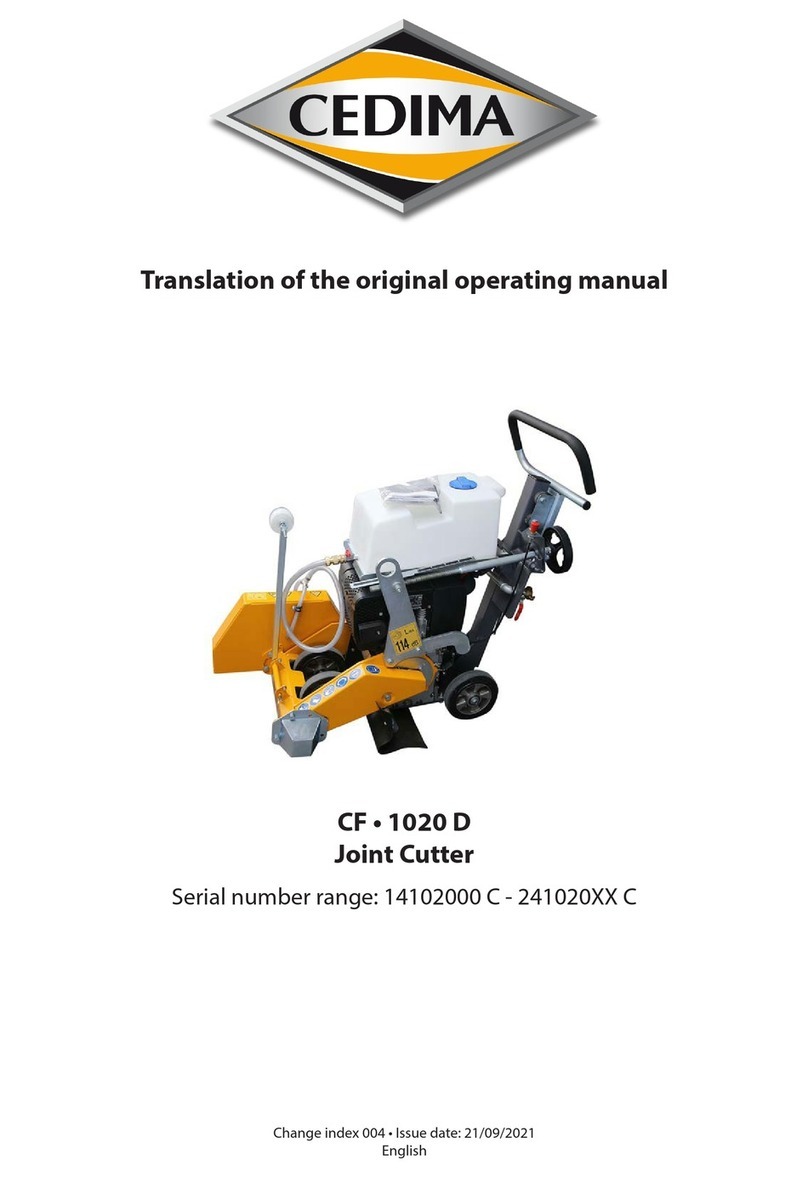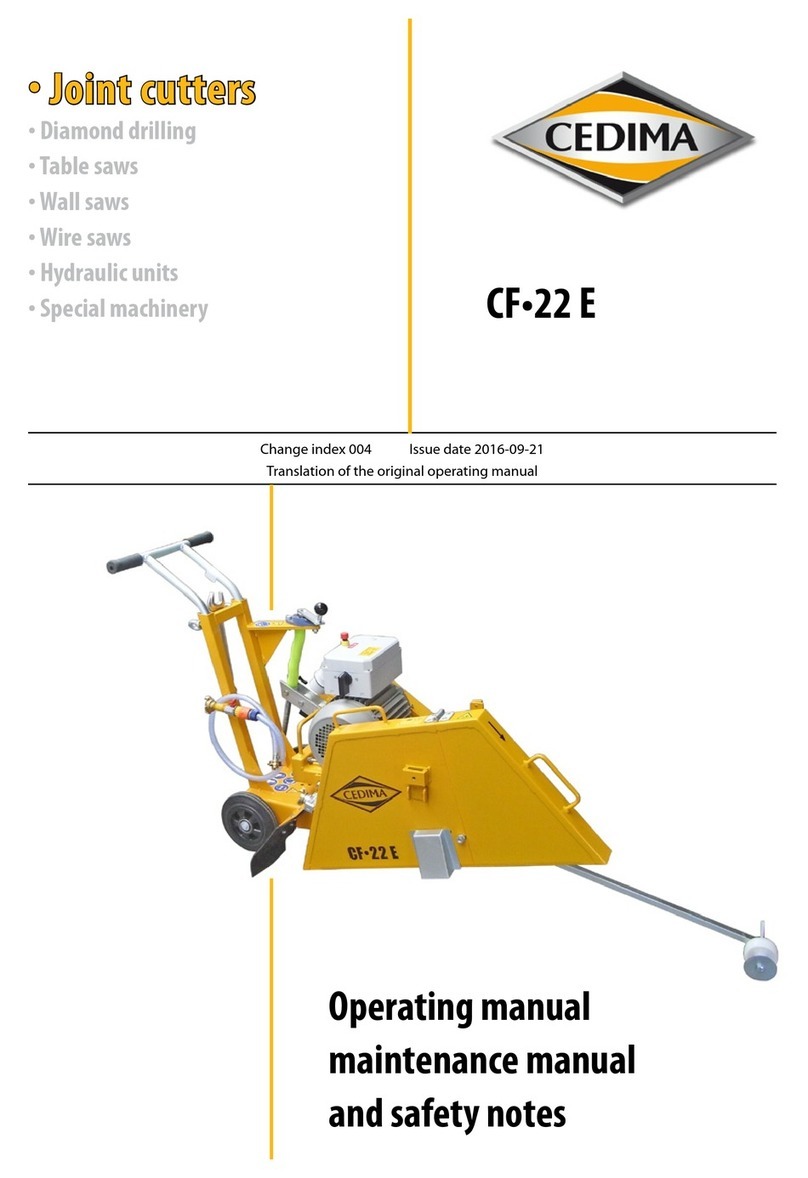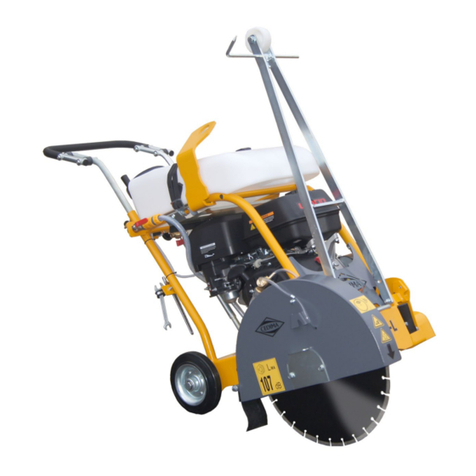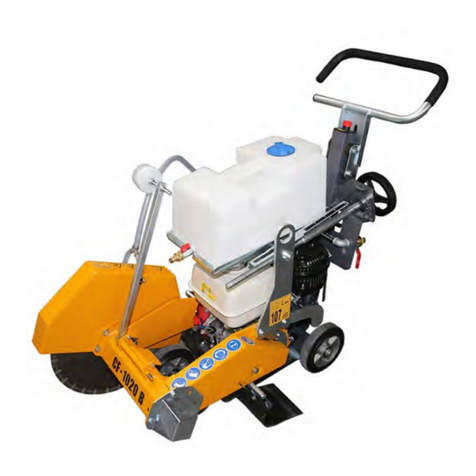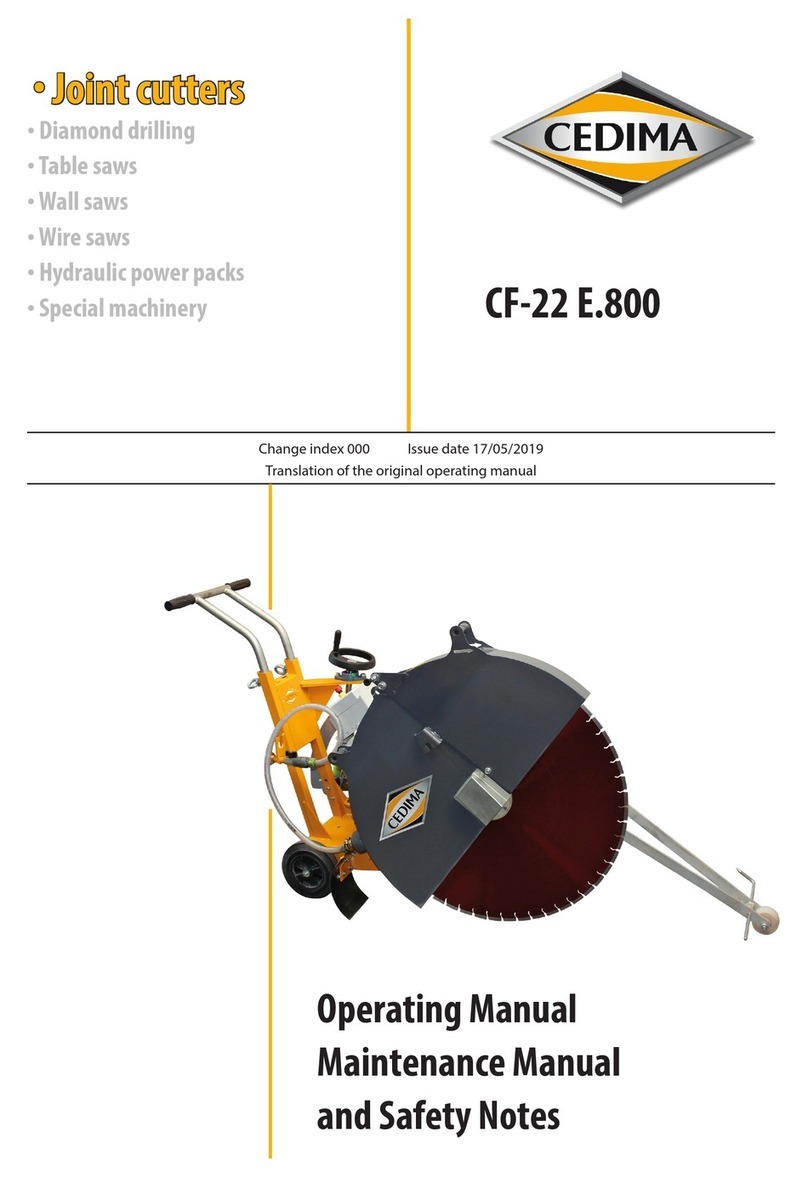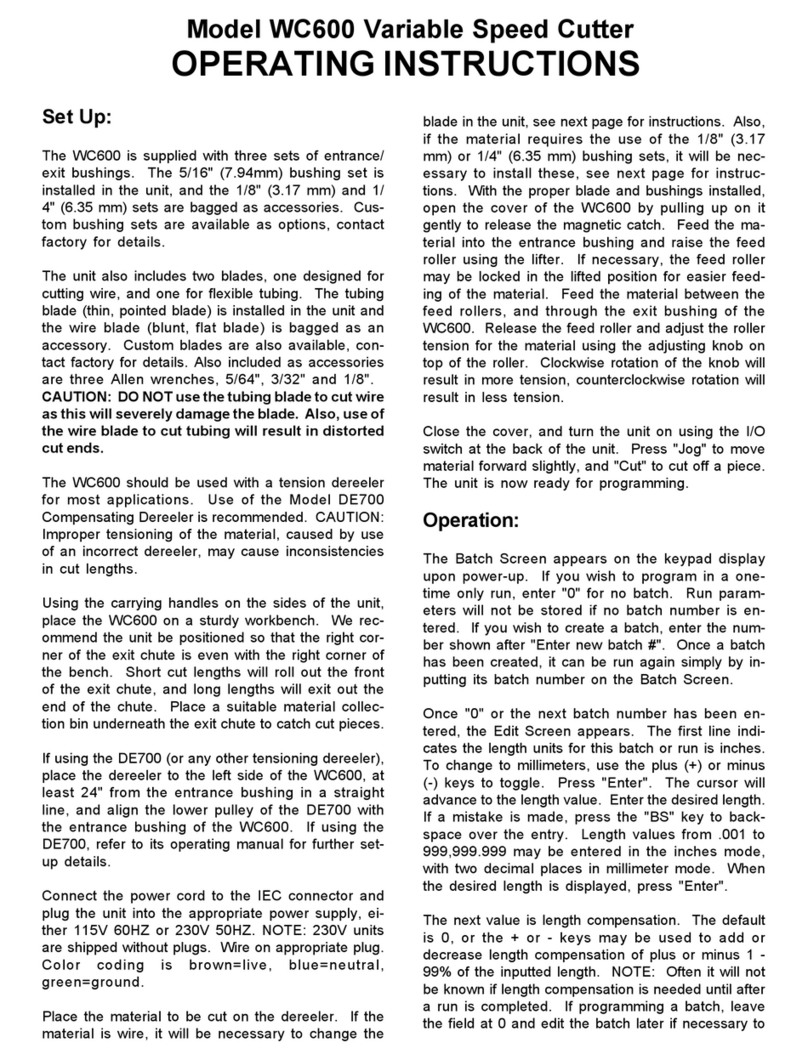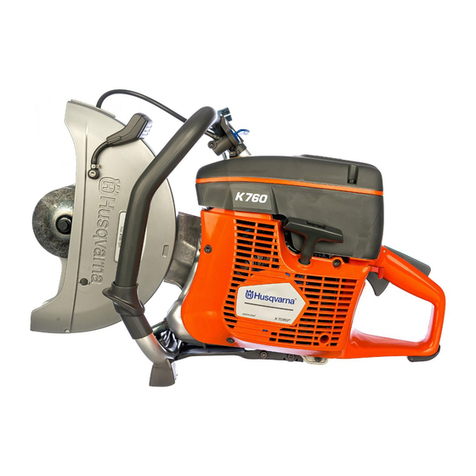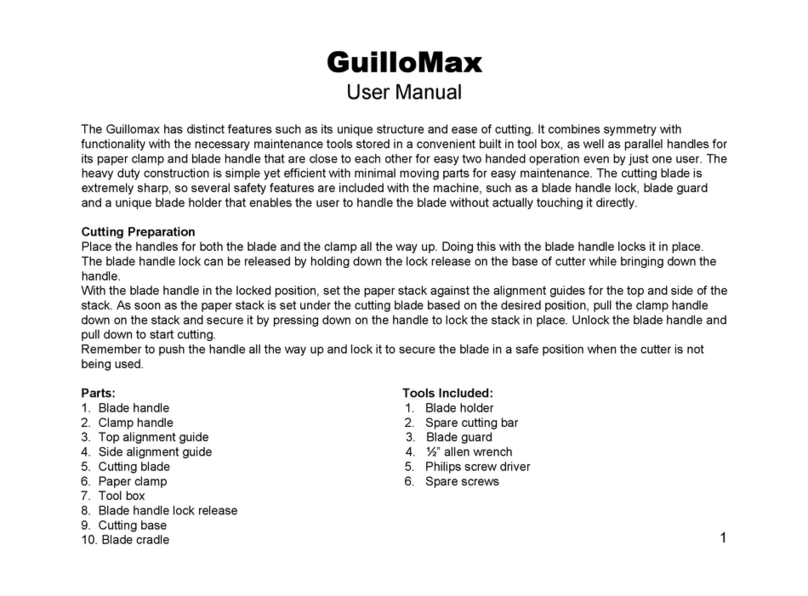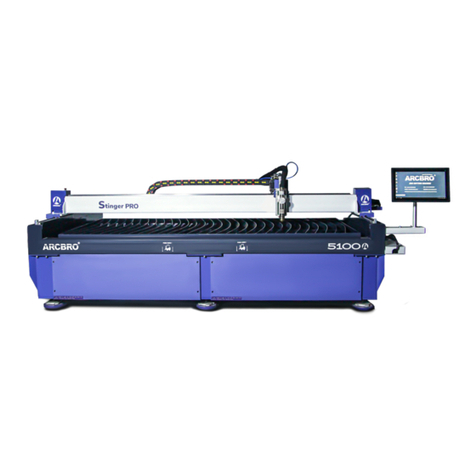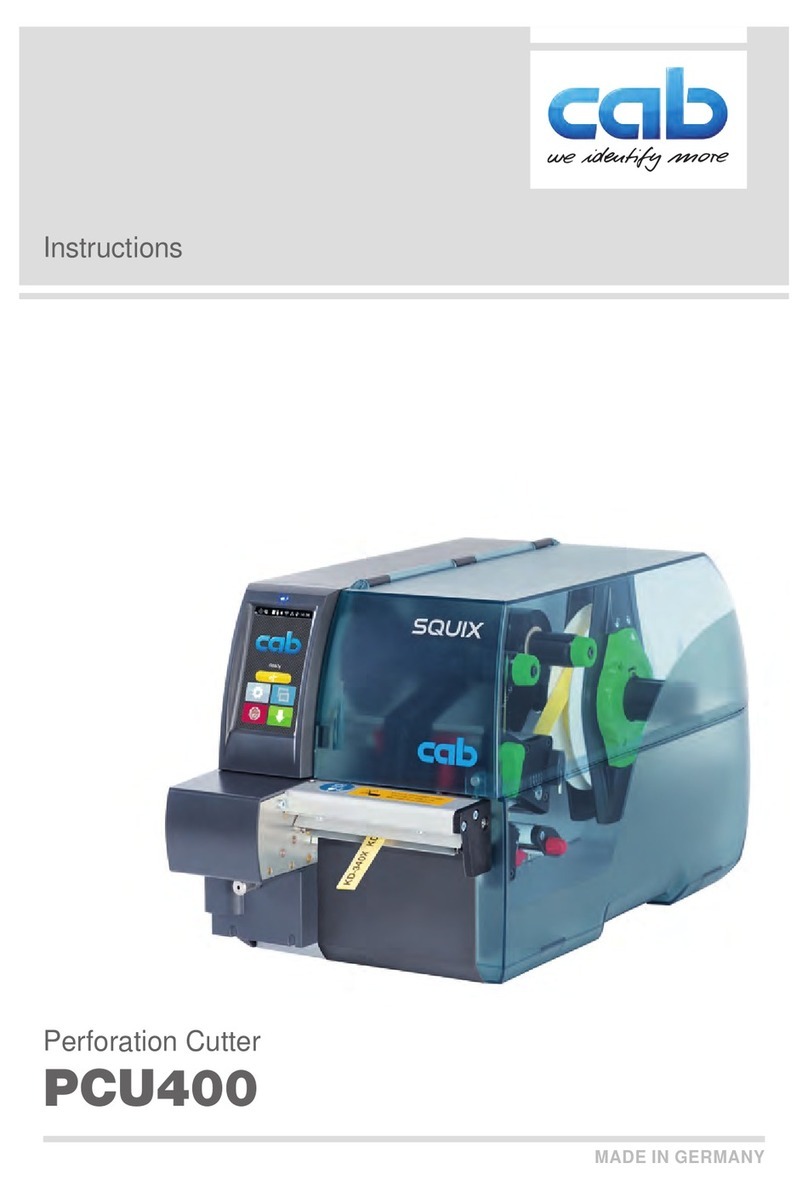
ENGLISH
6
General information on the product
• CEDIMA® • Technical Documentation • All rights reserved as per ISO 16016 • Subject to modications due to progressive development •
The joint cutters of series CF-2100 are known for their
extremely simple operation, the gentle use of diamond
saw blades and their high daily output. The joint cutter
CF-2116 D of series CF-2100 is used as a separating
and deep cutting machine up to a cutting depth of
300 mm in asphalt and concrete, for the construction
and repair of roadways, roads, cycle ways, supply
ways, airelds and industrial plants. Their manoeuvra-
bility also makes the joint cutters of series CF-2100
indispensable on green concrete.
The arrangement of all components with the resulting
weight distribution provides optimum cutting pressure
on the diamond saw blade with simultaneous easier
handling when moving and setting up.
The joint cutters of series CF-2100 are characterised
by great reliability, maximum power utilisation, simple
handling and a high level of operating comfort. Drive
unit and speed of cutting shaft are designed to ensure
optimum conditions for cutting with CEDIMA® diamond
saw blades.
The saw blade of the CF-2116 D is driven by a modern,
powerful diesel motor via V-belts to the cutting shaft.
The saw blade can be mounted on the right or left
side of the precisely manufactured cutting shaft with
a blade receptacle’s diameter of 25,4 mm. The blade
guard, also to be mounted right or left, is hinged in
front (g. 1.2) in order to enable cuts right up to the
wall. Feed is constantly carried out by means of a
hydrostatic, innitely adjustable feed gear.
A clearing of the feed gear also enables manual
movement of the joint cutter. The feed gear is
simultaneously used as a parking brake when the drive
motor is stopped.
The cutting depth adjustment up to a cutting depth of
300 mm is effected by an electro-hydraulic unit that can
precisely be operated by a control lever integrated in
the control panel. The lowering speed is pre-adjustable.
The cutting depth indicator is adjustable.
The cutting shaft can be lowered manually, without mo-
tor, via a valve (transport).
The adjustable front and rear pointers, mounted to the
machine frame, enable the operator to cut precisely
along a marked line.
The water for cooling the diamond saw blade is led via
pipes and nozzles in the blade guard to the saw blade.
This guarantees a complete wetting and the optimum
cooling of the diamond saw blade.
1.0 General information on the product
1.1 Description of the joint cutter CF-2116 D
modern, powerful diesel motor clearly arranged
control panel
height-
adjustable
push rods
blade drive via V-belts adjustable rear pointersaw blade receptacle
right/left
adjustable front pointer
hinged blade guard
water supply via blade guard
joint cutter CF-2116 D Fig. 1.1






